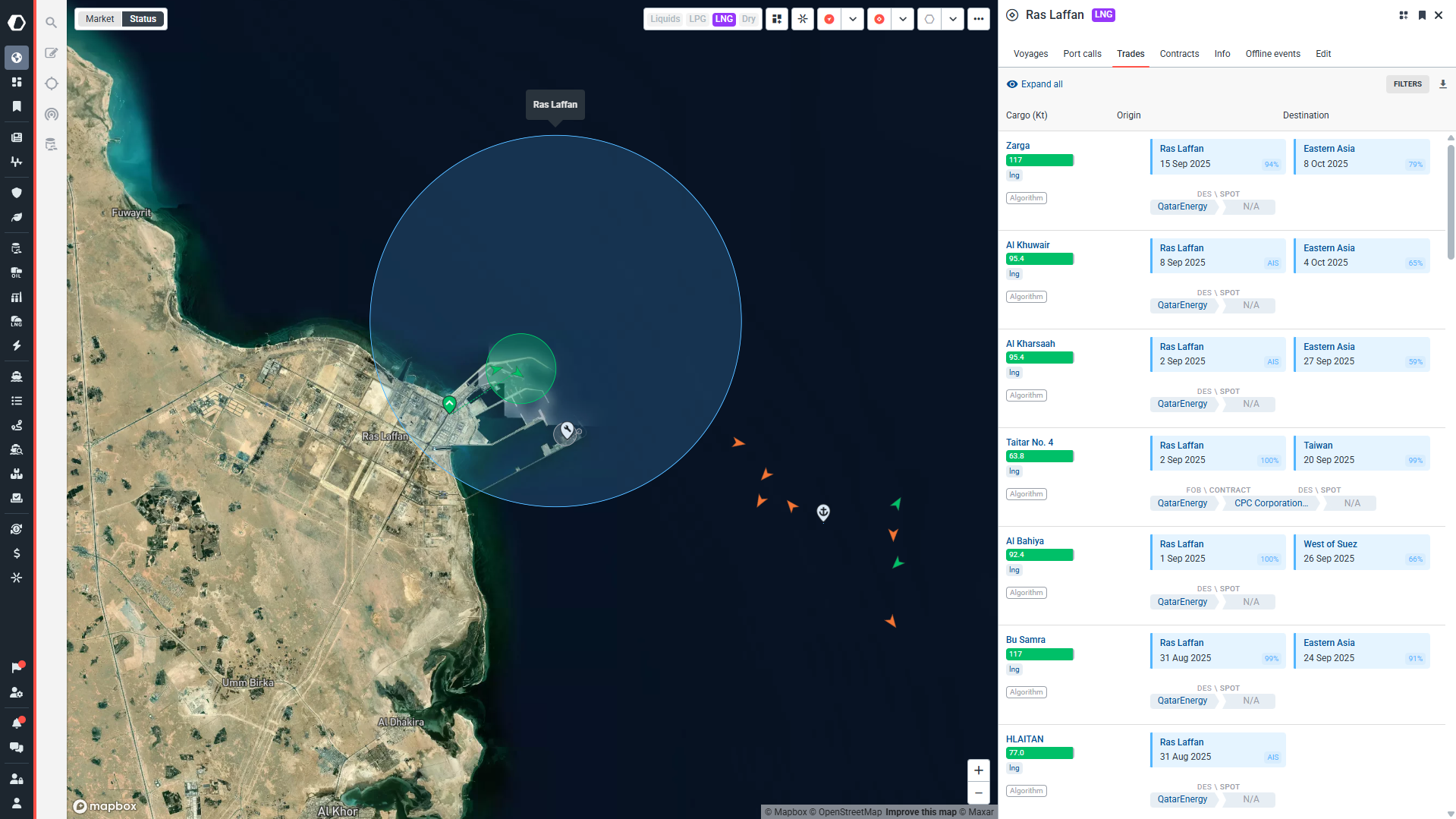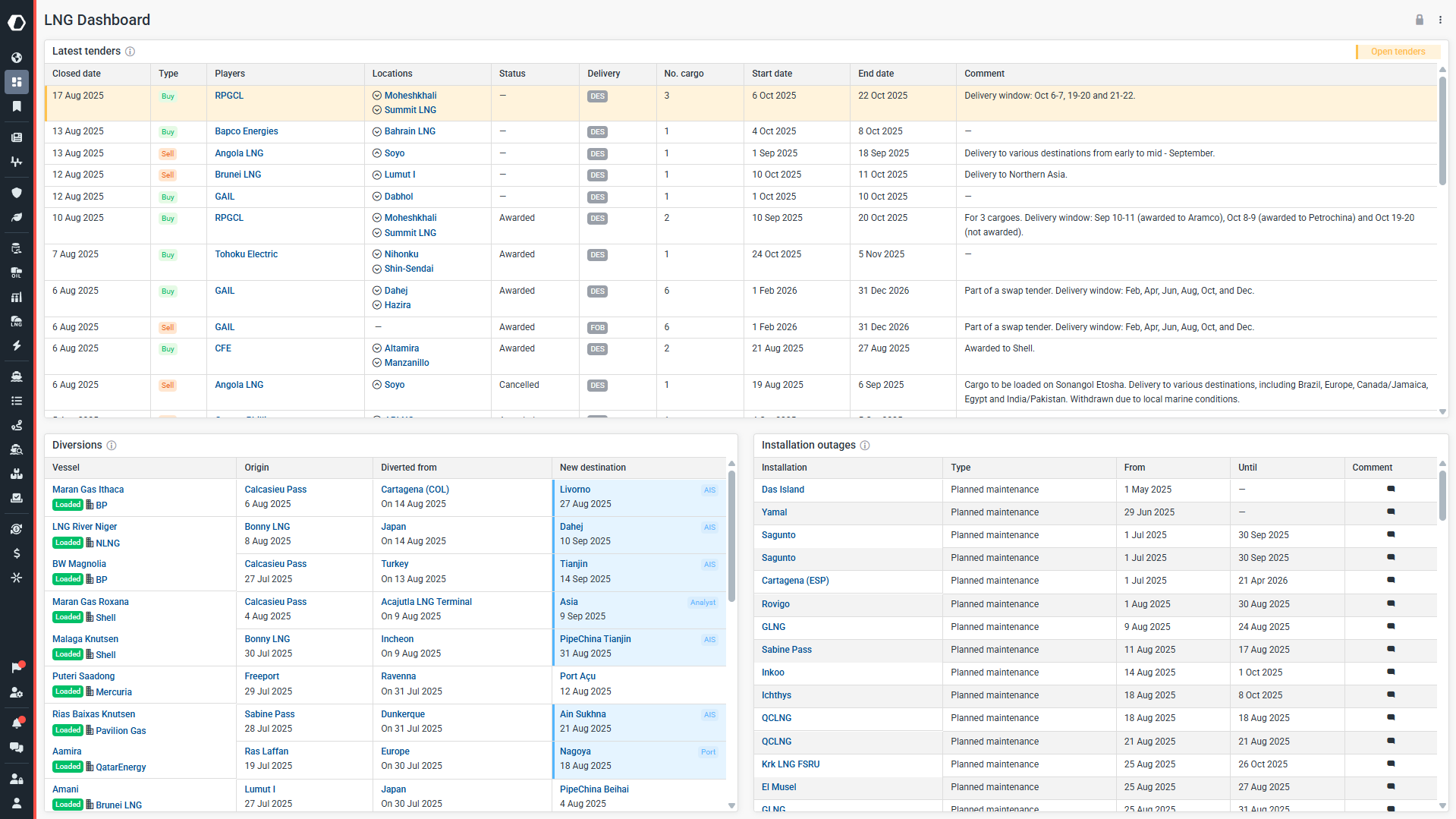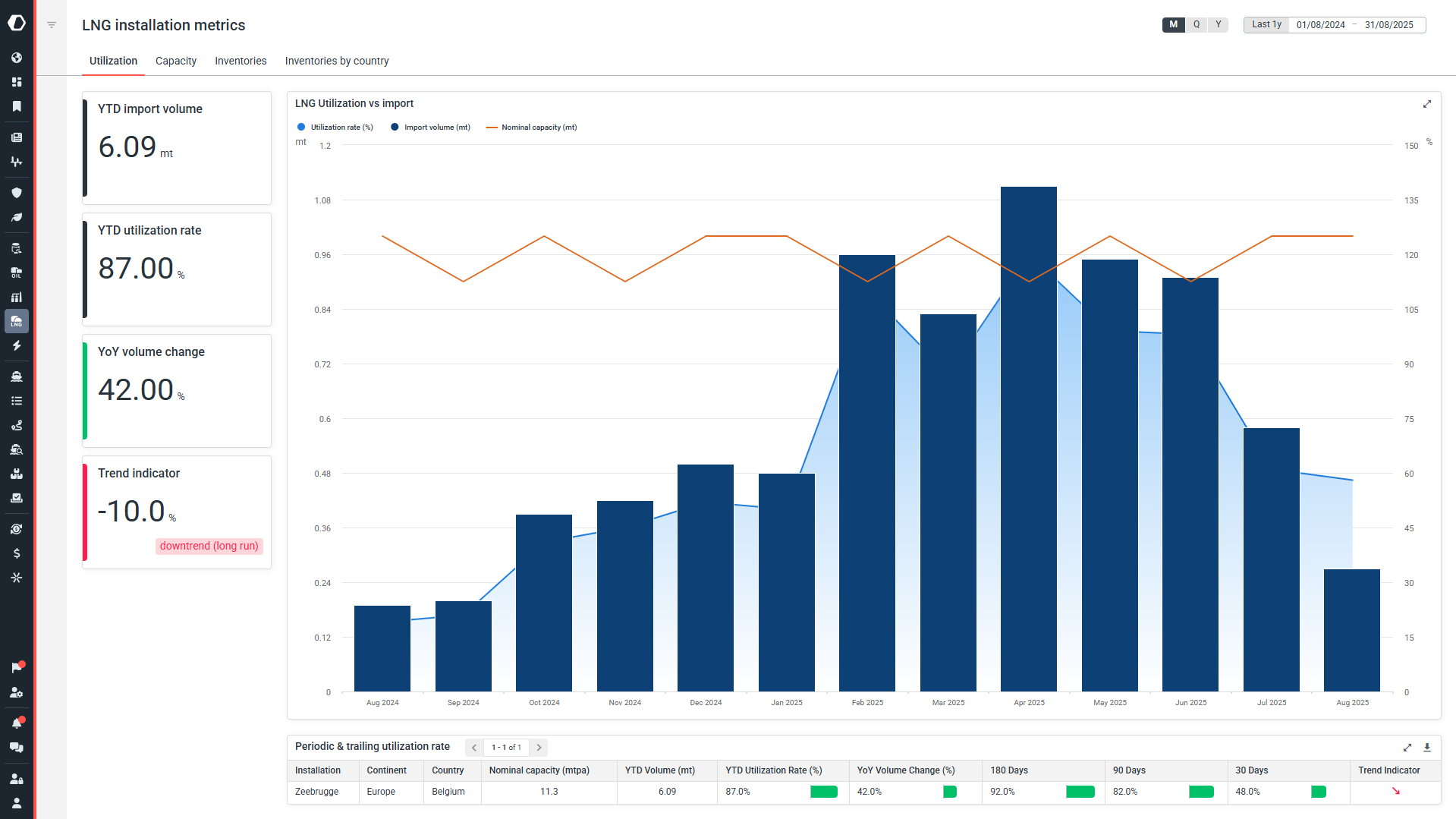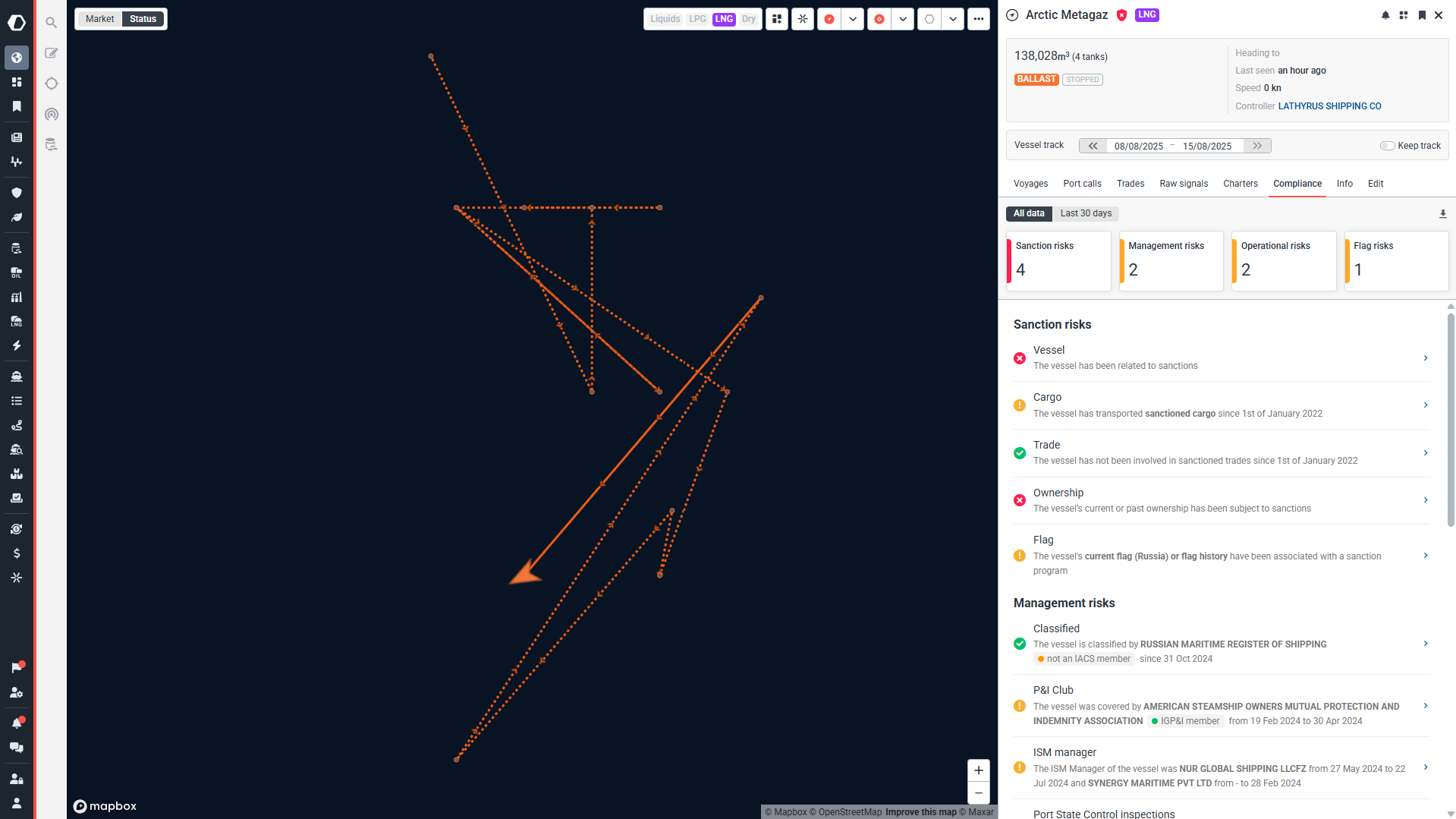Real-time LNG Market Intelligence
Gain unparalleled insights into global LNG market dynamics with accurate, real-time cargo tracking, freight insights, research, price forecasts, European pipeline flows and more.

Vessel Tracking & Operational Insights
- Destination Forecasting: Quickly identify cargo diversions and real-time destination changes with advanced machine learning forecasts to stay ahead of market movements.
- Real-Time Cargo Tracking: Monitor LNG cargoes with details like buyers, sellers, trade type, and voyage details like draught, speed, laden or ballast conditions, bunkering, including ship-to-ship transfers.
- Floating Storage Visibility: Precisely track global LNG storage to anticipate supply conditions and market disruptions.
Request demo
Comprehensive LNG Market data
- Detailed vessel behaviors: View real-time diversions for LNG carriers around the globe and quickly identify opportunities with customizable dashboards that can deliver critical updates.
- Contracts & Tenders: Identify recent tenders in the market, fixtures, in addition to terminal use agreements, sale and purchase agreements, and long term agreements
Request demo
In-Depth Installation & Storage Analytics
- Detailed Storage Levels: Analyze inventory by installation, country, and timeframe, identifying precise storage trends in Europe, the US, Australia.
- Capacity & Utilization: Access real-time utilization, historical data, and forecasts for major LNG terminals globally.
Request demo
Robust LNG & Gas Market Forecasting
- Price Intelligence: Access proprietary market price forecasts for Asian LNG, European TTF, and US Henry Hub, powered by expert analysts.
- Supply & Demand Balance: Gain detailed LNG supply forecasts for over 22 plants globally, including targeted insights into China's gas market.
- U.S. & European Market Analysis: Leverage proprietary forecasts on domestic production, pipeline flows, and LNG imports/exports. Analyze underground storage trends and domestic consumption across sectors.
Request demo
Strategic Market Intelligence & Compliance
- Compliance Monitoring: Easily screen vessel compliance, track sanctioned entities, identify ownership structures, and detect AIS spoofing to mitigate risks.
- Analyst Insights & Reports: Engage with daily, weekly, and monthly analytical reports covering supply-demand dynamics, geopolitical impacts, and market outlooks.
Request demo
LNG Bunkering Market Insights
- Operational Optimization: Utilize data-driven insights to optimize operations, identify opportunities, and navigate regulatory transitions toward cleaner marine fuels.
- Market Dynamics: Understand the rapid adoption of LNG as marine fuel, explore fleet expansions, emerging bunkering hubs, and regional developments.
Request demo
European gas market intelligence
- View physical flows across LNG terminals, underground gas storage and pipelines while monitoring daily capacity updates and maintenance schedules from European TSOs.
- Assess routes that meet your shipping and storage needs, compare spread and transport fees, and keep track of auction results to ensure that you never miss a trading opportunity again.
Request demo
Explore comprehensive LNG data now
A solution for every market
Delivering transparency for players across the ecosystem

Upcoming Webinar
Navigating Maritime Risk:
Harnessing Data for Effective Risk Management
25 July 10:00 New York / 15:00 London
close ×



.webp)






























.png)
.png)



